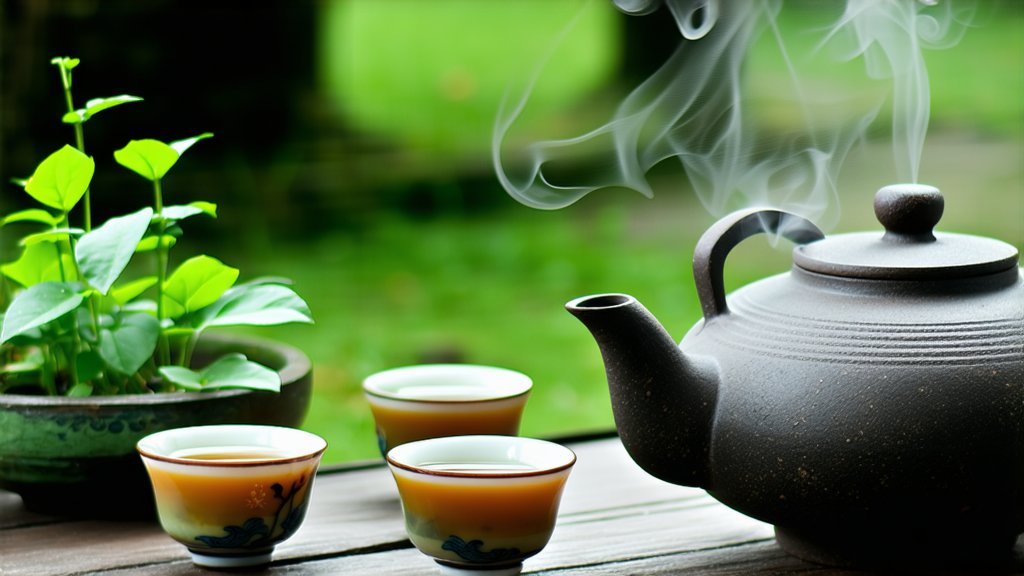
In the vast and diverse landscape of Chinese tea culture, where green, black, white, and oolong teas dominate the scene, there lies a hidden gem that often goes unnoticed by international tea enthusiasts—Huangcha, or Yellow Tea. Among its various varieties, one stands out for its unique processing method and subtle flavor profile: Junshan Yinzhen. This article embarks on a journey through the history, types, production process, and tasting techniques of this exquisite tea, shedding light on its significance in the world of tea.
A Historical Perspective
Junshan Yinzhen, named after the Junshan Mountain in Hunan Province, China, boasts a rich historical background that dates back over a thousand years. Its origin story is intertwined with the Tang Dynasty (618-907 AD), when it was first discovered by chance during the production of绿茶 (green tea). Unlike other teas that are quickly fixed to prevent oxidation, Junshan Yinzhen undergoes a special process called "闷黄" (mèn huáng), meaning "sealed yellowing," which gives it its distinctive yellow color and mellow taste. This accidental discovery led to the creation of a new category of tea within China's vast tea family.
Varieties of Junshan Yinzhen
While Junshan Yinzhen itself is a single varietal, it comes in different grades based on the picking season and the part of the tea plant used. The most prized is the early spring bud, known as "Yinzhen," which translates to "silver needle." These buds are covered in fine silver down and offer a delicate sweetness and aroma reminiscent of fresh hay or corn silk. As the season progresses, later harvests yield leaves with more maturity, resulting in a stronger flavor profile but still maintaining the characteristic yellow hue.
The Art of Junshan Yinzhen Production
The craftsmanship behind Junshan Yinzhen is a testament to the skill and patience required to produce such a unique tea. The process begins with careful handpicking of tender buds and leaves, typically in early spring when the first flush of growth appears. After harvesting, the leaves undergo a series of steps that set them apart from other teas:
-
Fixation (杀青): Unlike the immediate high-heat fixation used for green teas, Junshan Yinzhen is gently pan-fired at a lower temperature. This step halts enzyme activity without completely stopping oxidation, allowing for the development of its distinct yellow color.
-
Sealed Yellowing (闷黄): This is the defining stage where the leaves are covered and left to oxidize slowly under controlled conditions. This process can take several hours and is crucial for developing the tea's characteristic yellow appearance and smooth, mellow flavor.
-
Drying: Finally, the tea is dried using a combination of gentle heat and air circulation to remove any remaining moisture while preserving its delicate flavors.
Tasting Junshan Yinzhen: An Experience
To truly appreciate the nuances of Junshan Yinzhen, one must engage in the traditional Chinese tea ceremony, which emphasizes mindfulness and appreciation of each step. Here's how to conduct a proper tasting:
-
Warm the Teaware: Begin by rinsing your teapot and cups with hot water to ensure they are at an optimal temperature for brewing and to cleanse any residual flavors.
-
Measure the Tea: Use about 3-5 grams of Junshan Yinzhen per 200ml of water. Place the茶叶 into a gaiwan or a Yixing clay teapot for best results.
-
Water Temperature: Heat water to approximately 80-85°C (175-185°F), slightly cooler than boiling, to avoid scalding the delicate leaves.
-
Steeping: Pour the hot water over the茶叶 and let it steep for 2-3 minutes. The first infusion is often used to "wash" the tea and awaken its flavors. Subsequent infusions can be steeped longer, up to 5 minutes each, depending on personal preference.
-
Observe & Sip: Admire the golden-yellow liquor, noting its clarity and brightness. Take a moment to inhale the subtle aroma before taking a sip. Let the tea coat your palate, paying attention to its sweet, melon-like flavor and the smooth, velvety texture that lingers.
-
Multiple Infusions: Junshan Yinzhen can be steeped multiple times, with each infusion revealing different layers of complexity. As you continue, you may notice hints of floral notes, earthiness, showcasing the tea's versatility.
Conclusion
Junshan Yinzhen represents not just a tea but a cultural artifact, embodying centuries of tradition, innovation, and refinement. Its production is a labor of love, demanding precision and care at every step. For those who seek a departure from the more commonly known Chinese teas, this yellow treasure offers a unique sensory experience that bridges history and modernity. By exploring Junshan Yinzhen, we gain insight into the depth and diversity of Chinese tea culture, inviting us to slow down, savor, and appreciate the subtleties that make each cup a meditative journey.